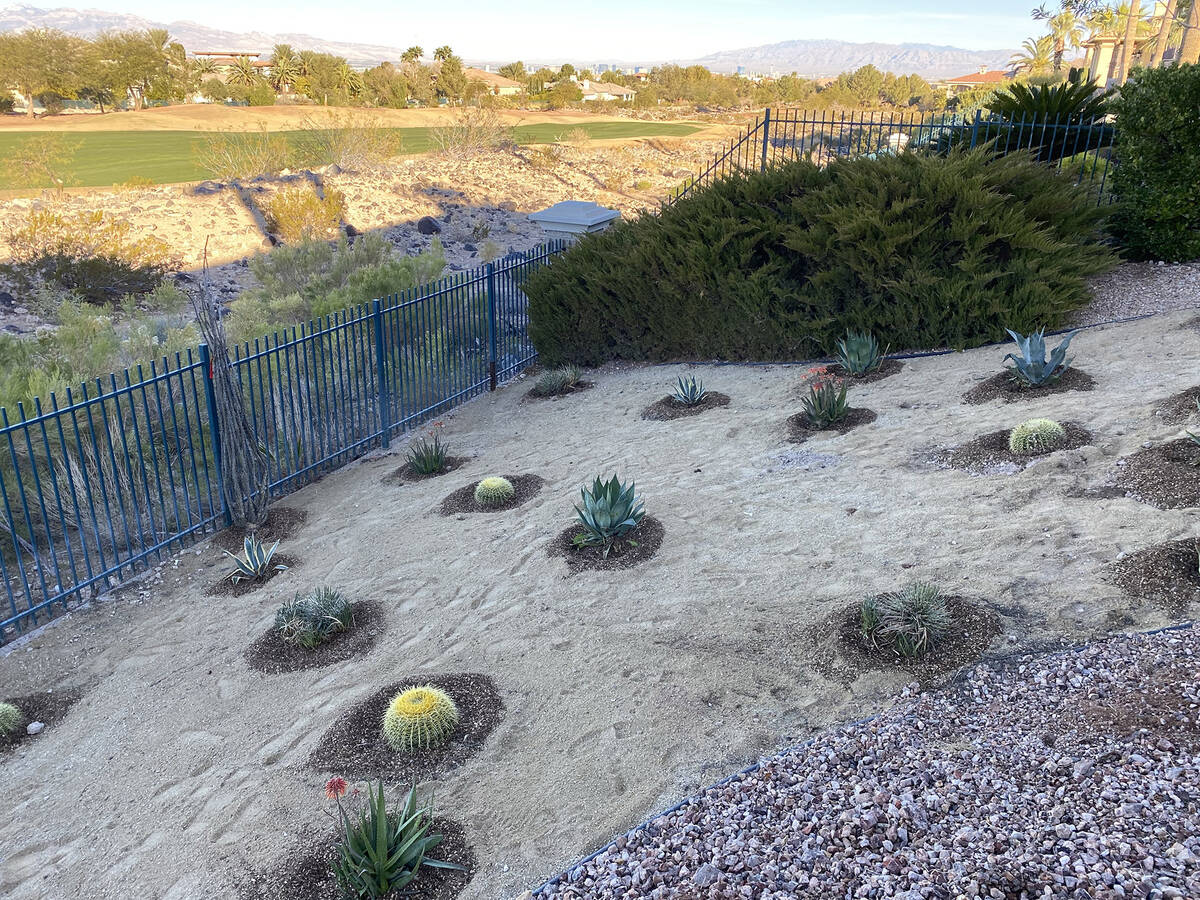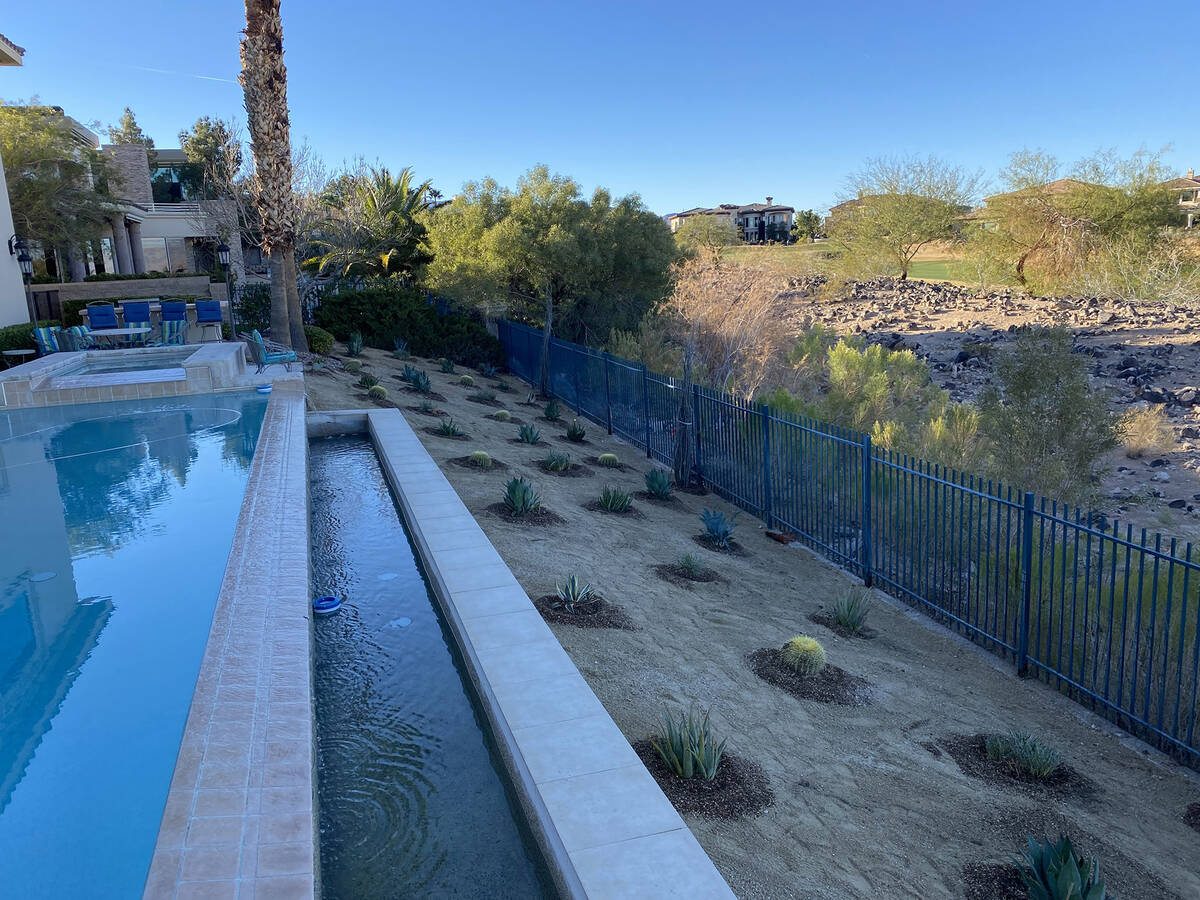Consider xeriscaping to save water
In case you’ve been living under a rock, the federal government has issued a water shortage declaration for southern Nevada.
However, rocks may be part of a long-term solution to the problem.
The drought, which peaked in July 2021 and shows no signs of slowing, has caused Lake Mead to drop 150 feet. This shortage reduces the amount of water Southern Nevada is allowed to draw from the lake, a primary source of water for the region. And watering outdoor landscapes is one of the largest draws on the region’s water supply.
Here’s where the rocks come in.
Many homeowners stopped worrying about lawns years ago when they converted their front yards to desert landscaping. The Southern Nevada Water Authority continues to rebate customers $3 per square foot of grass removed and replaced with desert landscaping — up to the first 10,000 square feet converted per property, per year. Beyond the first 10,000 feet, the SNWA will provide a rebate of $1.50 per square foot. The maximum award for any property in a fiscal year (July 1-June 30) is $300,000.
There are other incentives. Nevada Gov. Steve Sisolak has signed a bill requiring the removal of purely decorative grass found around Southern Nevada business complexes, along streets in HOA communities and in traffic circles and medians by the end of 2026.
But converting any landscaping to a drought-tolerant layout is not limited to just rocks. There are many lush, water-efficient plants, flowers and trees, along with a variety of annuals, vines, groundcover, perennials, cactus, ornamental grasses and succulents that bloom throughout the hottest months.
Matthew Fichera, the Nevada area regional manager for Moon Valley Nurseries, said the most beneficial step to achieve water conservation goals is reduced outdoor water use.
“The conversion to drought-tolerant landscaping is dedicated to the future,” he said. “Customers who come to our store have either bought a new home or they want to redesign their current landscaping to save water. When we initially create a new landscape, it takes a little more water at first, but the next year and for seasons beyond, water use diminishes.”
Fichera has numerous tools available to help determine the best solutions for a particular property, including mapping software, and each project is personalized to the client.
“We start a conversation to find out what the homeowner wants to do,” he said. “There are so many options. At the same time, it’s important to get a visual of the home to see morning and afternoon sun exposure. The right plants need to be in the right spot so they can thrive. And this includes shade trees that offer a cooling effect for the entire area.”
There are a wide variety of solutions. At the far end of the landscaping spectrum is the idea of zeroscape, which refers to mostly concrete, stone or gravel in place of traditional landscaping. Somewhere in the middle is xeriscape, a landscape method that minimizes the amount of water by combining native plants and trees with rock and gravel to create a more native outdoor space.
Daniel Rendon is a gardener and landscaper. He still mows green grass lawns for clients throughout the city. When they ask, he steers his clients toward synthetic turf as a replacement for natural grass.
“There are companies specializing in synthetic turf where fibers mimic grass perfectly,” he said. “Homeowners just have to make sure that the turf allows air and water to pass freely. If properly installed, the turf does not require a great deal of maintenance as long as there is a good drainage system.”
Rendon said rock and gravel add texture, depth and character and come in a variety of colors, patterns and styles.
“It’s a versatile landscape material that can be used as a pathway, is affordable for outdoor seating areas, is a useful drainage tool and can act as filler around flagstone pavers,” he said. “With many colors and sizes available, gravel works to enhance the look of many garden styles.”
At Moon Valley Nurseries, Fichera said the best way to begin any landscape plan is by selecting the right plants and grouping them accordingly.
“Look for plants native to the area,” he said. “Succulents are a great choice as they can sustain heat, are drought tolerant and retain water. Three popular succulents that have color and are flowering in Las Vegas are Echeverias, Euphorbia (firesticks) and Potulacaria.
“When you plant, make sure you group them according to their water needs and use shade that is naturally occurring in your yard. Cassia bushes have a nice spring bloom and don’t need a lot of water. Same with sage bush. Periwinkles bloom throughout the hottest months, and starflowers are a nice addition.”
Fichera said redesigning the home’s landscaping does not have to be done all at once. He encourages homeowners to take their time in selecting the right flowers, plants and hardscape.
“Just remember,” he said. “The landscaping needs to reflect you and your home’s personality.”


















